O'Fallon Old City Hall/ Town Hall
Introduction
Text-to-speech Audio
O'Fallon's old City Hall was built in 1890 as the Town Hall and Opera House, and held the township's offices, the fire department, and a jail on the first floor. A bell tower once signaled the alarm for the community's volunteer firefighters. The second story was a large space with a stage for meetings and performances. Around 1920, the building became the O'Fallon City Hall and the fire department remained at the east end of the first floor. The City Hall is now located a few blocks to the south and this building now serves as the offices of a behavioral health practice. O'Fallon's Historic Preservation Commission has designated the Old City Hall as a local landmark.
Images
O'Fallon City Hall (former Town Hall) in photo from 1954 program from town's centennial (O'Fallon Centennial Committee, p. 12)
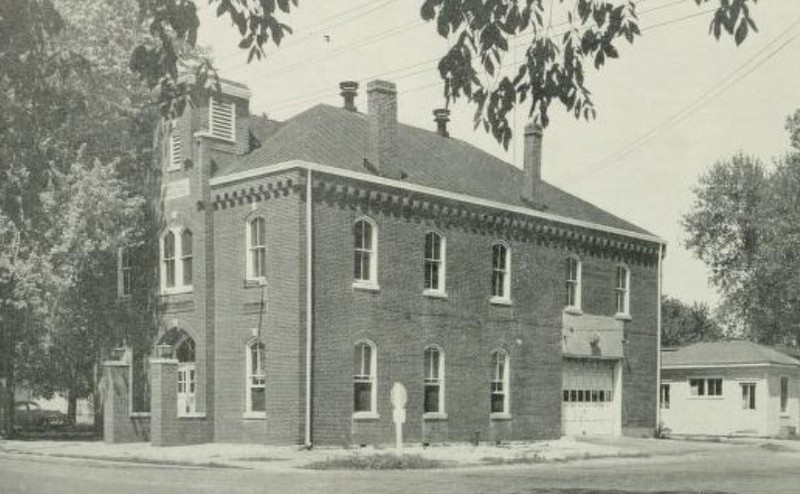
Town Hall and Opera House on 1893 Sanborn map of O'Fallon (p. 2)
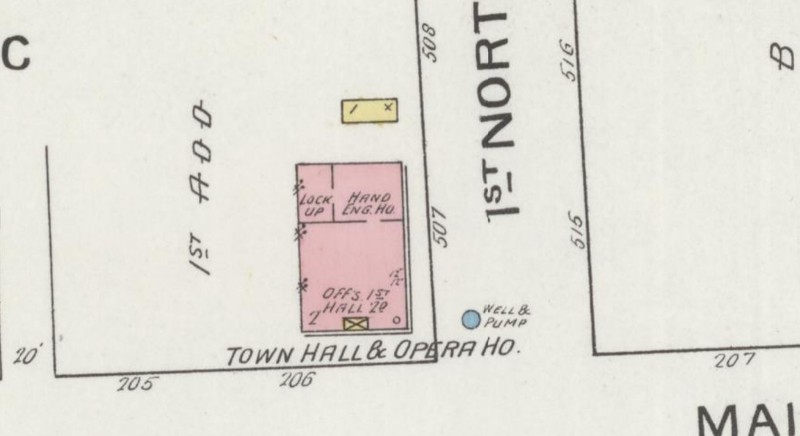
O'Fallon Township (purple bracket) and Town of O'Fallon (blue circle) on 1899 map St. Clair County (Guy Beaumont)
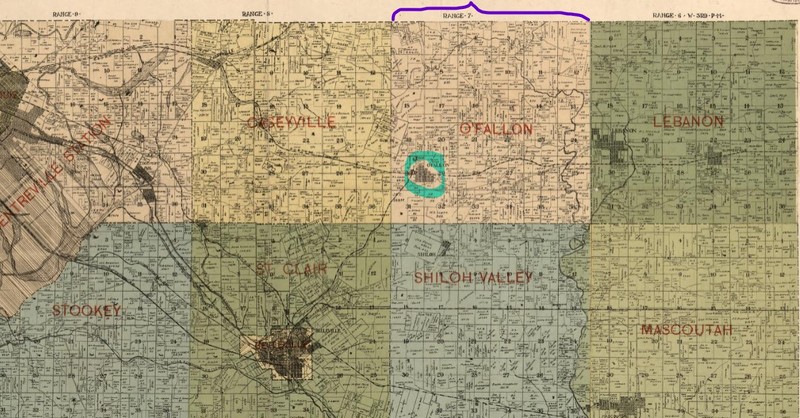
Town Hall & Opera House on 1906 Sanborn map (p. 3)
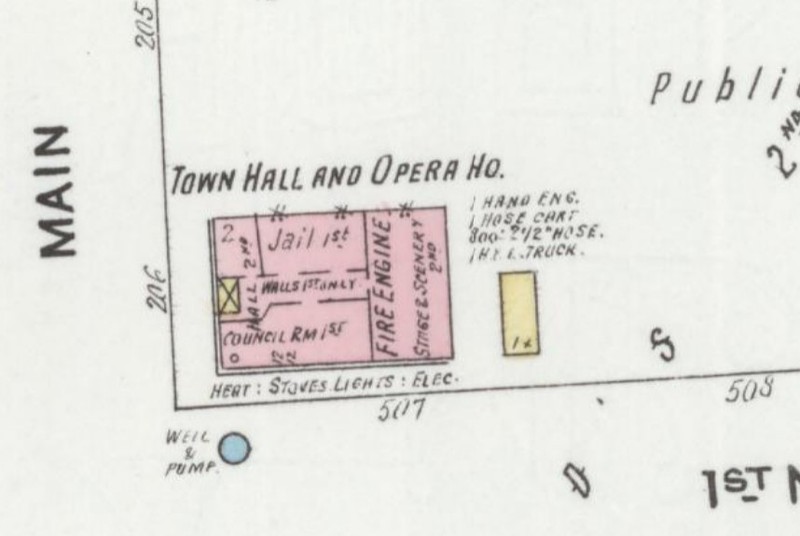
O'Fallon City Hall and City Park on 1921 Sanborn map (p.4)
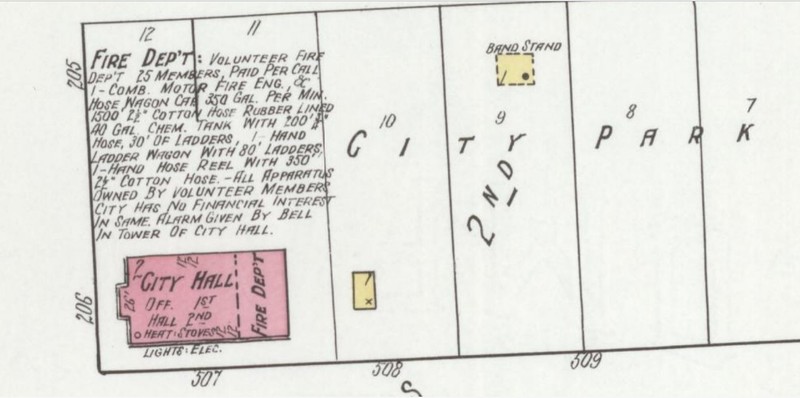
Backstory and Context
Text-to-speech Audio
O'Fallon Township was created in 1883 from part of Ridge Prairie Township. Like the town, O'Fallon Township was named for Colonel John O'Fallon, who settled in the region in the mid-1810s and later became president of the Ohio & Mississippi Railroad. The town began as O'Fallon Station, a railroad stop, in 1854. The town of O'Fallon is the township seat for O'Fallon Township. The Town Hall was built in the fall of 1890 to provide space for the township offices and for the Village of O'Fallon's increasing population to meet. The building was formally dedicated on the last day of 1890. Levi Simmons was then the President of the Village. At the opening ceremonies, the Honorable Jehu Baker spoke on the benefits of public improvements and the Honorable L.D. Turner's address was on the New O'Fallon. When it was built, the building was on the corner of Main St. (now N. Lincoln Ave.) and N. First St. (now E. Washington St.).
As is common in small towns, the new Town Hall was a multi-purpose building. The 1893 Sanborn map of O'Fallon labels the building the "Town Hall & Opera Ho.[use]" and states that there were offices on the first floor and a hall on the second. In the rear (east side) of the building, one corner room was the town jail ("Lock Up"), and the other corner room held the town's fire engine (Hand Eng.[ine] Ho.[use]"). There was a well in North First St. (likely a dirt road) just a few feet from the corner building, so it would have been convenient to fill the water tank of the likely horse-drawn fire wagon. The town's water supply was improved by installing three miles of 4-inch and 8-inch water mains in 1896.
There were nearly 1,300 residents in O'Fallon in 1900. Population grew quickly over the next decade and reached just over 2,000 in 1911. By 1906, the jail had moved to a first-floor room on the north side of the "Town Hall and Opera House." The Council Room occupied the southwest corner of the first floor. The Fire Department took up a larger space on the east side of the first floor and owned one hand engine, one hose cart, 800 feet of fire hose, and one truck. Above the Fire Department was the stage and scenery storage in the hall. The building had electric lights by 1906. The well with a pump was still located in the street south of the building. The building was just called "Town Hall" on the 1914 Sanborn map; the rest of the building looked similar to 1906 except the jail was not mentioned (the first floor was "offices"). The well was no longer shown in N. First St.
By 1920, O'Fallon had grown to a population of nearly 2,400, making it the third largest city in St. Clair County. The Town Hall building became O'Fallon City Hall around 1920. The entire rest of the block containing the building was "City Park" in 1921 and was undeveloped except for a wood frame 1-story small structure to the east of the City Hall and a wooden bandstand near D St. (now an alley). The entire east end of the building was the Fire Department in 1921. The volunteer fire department was made up of 25 members; the fire alarm was sounded by ringing a bell in the tower of City Hall. It took until 1936 for the city's population to reach 2,500. By 1950, O'Fallon's residents numbered over 3,200.
A new fire station (O'Fallon Fire House 1) now stands to the east of the former Town Hall. The O'Fallon Township offices are now at 801 E. State St. O'Fallon's City Hall is a few blocks south at 255 S. Lincoln Ave.
Sources
City of O'Fallon. Landmark Designations - Photos & Descriptions, Historic Preservation Commission. Accessed December 10th, 2022. https://www.ofallon.org/historic-preservation-committee/pages/historical-landmark-designation-photos.
O'Fallon Centennial Committee. O'Fallon Centennial Celebration, 1854 - 1954, Souvenir Program and History of O"Fallon. O'Fallon, IL. City of O'Fallon, 1954.
O'Fallon Township. General Information, O'Fallon Township, St. Clair County, Illinois. December 1st, 2022. Accessed December 14th, 2022. https://ofallontownship.org/.
Sanborn Map Company. Map of O'Fallon, St. Clair County, Illinois. New York, NY. Sanborn Map Company, 1893.
Sanborn Map Company. Map of O'Fallon, St. Clair County, Illinois. New York, NY. Sanborn Map Company, 1906.
Sanborn Map Company. Map of O'Fallon, St. Clair County, Illinois. New York, NY. Sanborn Map Company, 1914.
Sanborn Map Company. Map of O'Fallon, St. Clair County, Illinois. New York, NY. Sanborn Map Company, 1921.
Internet Archive: https://archive.org/details/ofalloncentennia00ofal/page/12/mode/2up
LOC: https://www.loc.gov/item/sanborn02064_001/
Library of Congress (LOC): https://www.loc.gov/item/2013593080/
LOC: https://www.loc.gov/item/sanborn02064_003/
LOC: https://www.loc.gov/item/sanborn02064_005/
